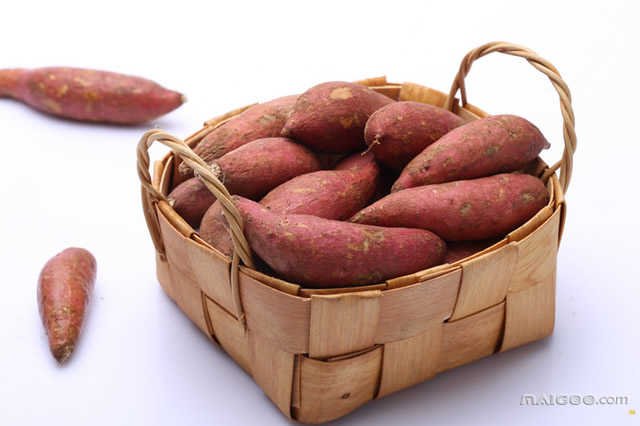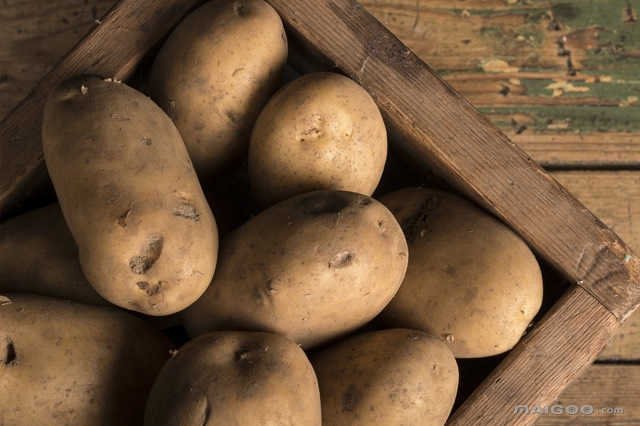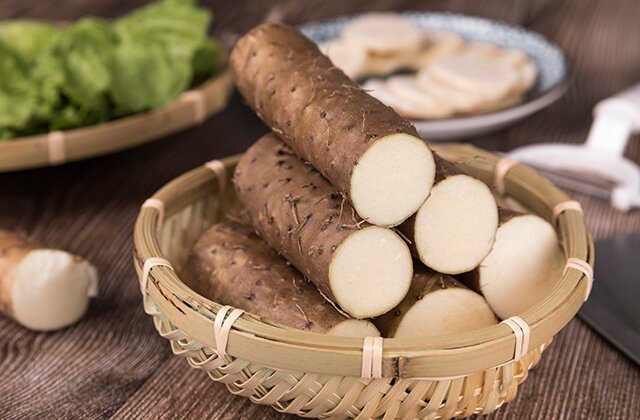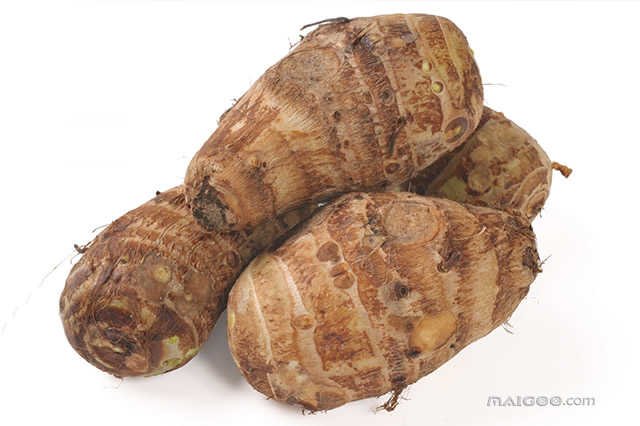What kind of potato foods are there of potato food planting methods
Sweet potato planting

planting technology
1. Soil
It is advisable to be deep, loose, well -drained, organic with more organic matter, and a certain Fertilizer.This kind of soil is loose, with good breathability, short -shaped shapes, neat, bright Skin, good food, high out of rate, and good storage resistance.
2. color
Seecn beds should be selected from the sun, high terrain, good drainage, convenient management, and fertile soil. It is best to be new seedlings. Old seedlings are often infected with dark spots and nematode diseases.Flink the seedlings of the seedlings once before planting potato, so that the soil grains are fine, the soil is loose, the farming layer is deep, and the chart is raised and raised.The seedlings are determined, generally no more than 6 meters.
3. Select planting
Select healthy potato species with this variety characteristics, distinctive Skin color, strong living power, moderate size (0.15-0.25 kg/piece), strictly eliminate the dark Skin color, cold damage, softened potato pieces, too much water loss, too much water loss, too much water loss, excessive water loss, too much water loss, too much water loss, too much water loss, too much water loss, too much water loss, too much water loss, too much water loss, too much water loss, too much water loss, too much water loss, too much water loss, too much water loss, too much water loss, too much water loss, too much water loss, too much water loss, too much water lossMore, and tetanus potato pieces with 70%methyltotobadin 300 times liquid before sowing for 10 minutes to disinfect, the effect is better.
4, density
Plant density varies from season, variety, use, etc.spring and summer potatoes are 3,000-5000 plants per mu, and autumn and winter potatoes are 4,000-6000 per acre.Strive for the leaf area index in the heyday of stems and leaves reached 3-4.5.Due to the continuous cutting of stems and leaves, the feed sweet potatoes can be encrypted to 6000-8000 plants per mu under the condition of multiple Fertilizers.
5. Temperature
The higher the temperature in the range of 16-35 C, the faster and more sprouts.16 C is the minimum temperature of the potato blocks, and the most suitable temperature range is 29-32 C.When the potato block is above 35 C for a long time, due to the great breathing intensity of the potato blocks, the consumption of nutrients, it is prone to "bran heart".When the temperature reaches above 40 C, it is prone to damage to hot and rotten potato.
Diseases and insect prevention
The main diseases of Sweet potato are Sweet potato black spots, Sweet potato stem neck disease, Sweet potato soft rot, potato plague, Sweet potato sore disease, Sweet potato vine disease, Sweet potato root wirling disease, Sweet potato rot, Sweet potato virus disease, Sweet potato purple patternYu Diseases and so on.The main pests of sweet potatoes include nasal insects, crickets, golden Turtles, ground tigers, and Sweet potato moth oblique night moths.The prevention and control of Sweet potato diseases and insect pests should adhere to the principles of preventing and comprehensive prevention.
Mainly controlling diseases and insect pests:
1. Choose a variety of disease resistance, pay attention to the disease quarantine of potato and seedlings.
2. Cultivate disease -free and strong seedlings, choose disease -free potatoes and seedlings from no library areas, or use decontamination seedlings.
3. Use a 50%bacterial or 50%methyltotobadin 500 times liquid to soak the Sweet potato vine for more than 2 minutes, and plant it after cooling.
4. Datian found that the diseased strain should be removed immediately and burned, and sprayed with a 50%fungus spirit 1000 times liquid. According to the situation, it can be sprayed once every 7 consecutive days until the root is eliminated.
5. Thoroughly clean up the diseased plants during harvest, pay attention to the rotation of water and drought, strengthen the management of water and Fertilizer, pay attention to drainage and ventilation, and appropriately appropriately appropriately apply plant ash and lime to make the plants grow strong and strengthen the disease resistance.
6. The main pest control of sweet potatoes can be used with pesticides such as the fear of enemy, killing pine, polyester pesticides, etc. According to the correct explanation, it is usually sprayed in the afternoon.
Potato planting

planting technology
1. Select the plot
The plot suitable for cultivating potatoes should be loose, good for soil, good permeability, rich organic matter, flat terrain, close to water, and convenient discharge irrigation.
2. Reasonable rotation
Potatoes should not be continuous, because the continuous work can increase the pests and pests of the soil, which can easily cause serious lack of certain elements in the soil. The natural balance of the soil microorganism is destroyed, the accumulation of harmful substances secreted by the root system will affect the yield and quality of potato.The previous crop can be rice, corn, green onion and garlic, melon, etc.
3. Reasonable fertilization
It is best to use balanced fertilization (formula fertilization).The Fertilizer of potato is fertilized. Tests have proved that when the tuber produced per mu is 1,000 kg, it is necessary to absorb 5.6 kg of nitrogen from the soil, 2.2 kg of phosphorus, and 10.2 kg of potassium.Potatoes need the most potassium for Fertilizer three elements, the secondary nitrogen, and less phosphorus.
yam planting

planting technology
1. Put the buds of yam seeds into the soil. The interval between lines and lines is about 1 meter, and about 10,000 pieces per acre of land are planted.
2. The growth process of plants such as yam needs to keep the surrounding environment high temperature and dryness, and do not like frost.About 35 days is enough to see Chang Miao.
3. Because the rhizomes of yam are relatively weak, they need to grow upward after emergence, otherwise it will easily wither.
4. Dorodes once a month for half a month, until about half of the shelf height, and then just remove the weeds.
5. Apply Fertilizer at the appropriate time and inhibit the growth of the ground. During the flowering period, fertilization can also be used to increase yield.
6. Properly increase some irrigation. Although yam is a drought environment, it is necessary to water in moderation in continuous drought weather. In the case of continuous heavy rain, it is necessary to drain it in time.
taro planting

planting technology
1. Temperature
taro requires high-temperature and humid environmental conditions. The bulb of the taro at 13-15 C began to germinate.The moderate growth temperature during the seedling period is 20 to 25 degrees, and the temperature growing temperature is 20 to 30 degrees.
2. Water
Whether it is a taro or a riru, it likes moist natural environment conditions.In particular, the leaf is strong and the period of the galvan stems is large. The amount of water requires a large amount of water.
3. Light
taro is more resistant to weak light, and the intensity of light is not very strict. The formation and expansion of the ball stems require short -day conditions.
4. Soil
taro is a happy crop, and its ball stem is formed in the underground soil layer. Therefore, it should be selected to be rich in loam or clay loam with rich organic matter and deep soil layers.
Cassava planting
planting technology
1. Origin environment
Edible cassava generally needs to be planted in areas with a frost -free period and an average annual temperature of 18 C and above.The origin environment of non -rigorous cultivation of cassava should meet the requirements of DB45/T410.
2. Selection and rectification
It should be selected to plant flat or mild sloped sand soil. For example, the planting site needs to be rotated by 2 years, 3 years, etc. The rotation crops are preferably crops such as peanuts, corn, soybeans and mung beans.The whole land is carried out in about one month before planting. Generally, it is two plows and two rakes. It is advisable to be a cultivated land depth of 30-40cm, making the soil flat and loose.3. Variety selection
The varieties of excellent characteristics such as low hydrocyanic acid content (below 100 mg/kg), high yield, high -yield, disease -resistant pests, and strong anti -inverse characteristics.my country mainly has a variety of cassava varieties such as Cutchota, South China No. 9, South China 6068, No. 12 South China, and GR891.
4. planting
The suitable planting time of cassava in my country is from February to April. It is advisable to choose the main stems of full maturity, 2-4cm of stem and diameter, dense section, stem Skin and buds, and disease-free pests. Stems, cut it into 15-20cm in length.The planting method can adopt four methods: flat, oblique insertion, and direct insertion and peaceful insertion. It is better to adopt a ridge covering membrane to plant or take a ridge dewdo plane.1M 0.8m is better.
Prevention and treatment of pests and insect pests
In my country, there are fewer cassava Diseases and diseases. Pests and insect pest control must adopt the principles of prevention -oriented and comprehensive prevention. agricultural prevention and control must be used to prohibit the use of pesticides and mixed preparations for the use of countries.When there is no large area of diseases and insect pests, the method of artificial removal should be used and destroyed in time;Secondly, measures such as weeding and soil cultivation can be created to create ecological conditions that are not conducive to the occurrence of pests and insect pests, but it is beneficial to or not hinder the growth of cassava growth.If the area of disease and insect pests is large, high -efficiency, low toxic, and low -residue pesticide varieties need to be selected for prevention and treatment.Cotenato grass damage is recommended to use artificial, machinery and cultivation techniques to prevent removal, such as ground film covering weeding technology, plowing Fertilizer and soil technology, and setting.


